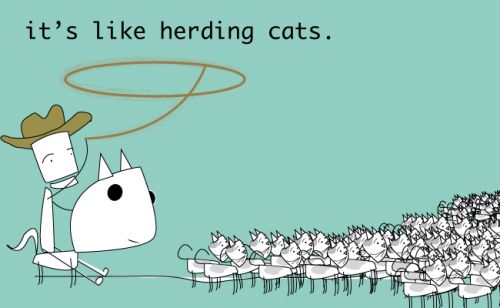
I called this post The WOW (World of Wonderment) of CSLE because from my perspective as an educator of 20 years it is a eureka moment. Not because it’s new, but because the concept has a name.
As a journalist and teacher, I was exposed to Buck Ryan’s Maestro concept back in the early/mid-90s as a team method for newsroom operations. When I began teaching in 1997, I introduced the concept to my students and I’ve used it ever since. It wasn’t until a few years later, I discovered the concept of student-based learning (I taught on a probationary teaching certificate for 3 years while earning my official certificate) from a class I was taking. I got lucky I guess. However, student-based learning seemed a natural fit for my journalism classes.
At first as “Mr. Professional Journalist” certainly all of my students would bow down to my “expertise and worldly knowledge.” Reality couldn’t have been further from the truth and I was overwhelmed and I was pretty sure all of my students had learning disabilities. It was me that had the learning disability – I didn’t know how to teach. Sure I had a lot of knowledge, but no knowledge of teaching – only my personal experiences suited only to me.
My remedy was to seek out colleagues who did know how to teach. I joined with the Texas Association of Journalism Educators (the state chapter of the Journalism Education Association) and began to meet colleagues and talks with other teacher via bbs (yes, I’m that old) and later webchat. This discussions later became meetings and joined with a mentoring program the group was starting and Susan Roberts from LaPorte HS and Diane Smith from Elsik HS in Houston drew me as their lot. I have never been more grateful to the knowledge they shared with me. Texas boasts the largest high school journalism association in the US, and it still is.
These two ladies, who I had not ever met, were two of the grand dames of scholastic journalism and took me under their wings. What they taught me is that my classes weren’t about me, but about my students and they first floated the idea of student-centered learning to me. At first, I modeled at lot of what they did and later as I gained confidence I built my own program. Diane was a pioneer nationally in bringing high school journalism online, she has authored many articles and published in several textbooks. We communicated primarily via email the first couple of years and our contact was sporadic at time, but we all checked in with one another and visited at conferences. It was through this process I also learned that technology is just a tool – it is not a means to an end, it is an ongoing process.
Teachers should act as coaches and curators to foster students to seek out their own learning. All students want to learn, but they need the encouragement to know that they can learn. Teaching is about building relationships, developing chemistry between individual students and groups. It’s not easy, it’s certainly not predictable. I do think sometimes my job was made easier because of the subject I teach – everything is always on table. Current events, music, art, fashion, sports – you name it and someone is doing a story about it. The challenge I always put forth to my students is how to localize a topic to make it relevant to their audience. My students primary audience were people just like themselves.
Douglas Thomas spoke in the first video about content vs. context and I don’t necessarily see those as opposing parts as much as companion parts of the same equation – like yin and yang, positive and negative. I think if there is one, the other exists as well. Our role as coach is to guide learning as a continuing product or series of products. It doesn’t end, but is additive and subtractive in nature. We teachers guide that nature so that students can develop “trust” in their own process to elaborate on that nature.
In my current role, I’m confronting some of these same issues of mismatch between curriculum and student reaction – their is a disconnect between many courses and degree programs and a process is in motion to address it. The question is “How soon is now?” in regard to making structural changes to address it? In my specific area, the University Press, we develop and adapt on a daily basis. I’m fortunate to have a colleague that is copacetic with similar ideas. We both think that it is better to ask for forgiveness more often than asking for permission. We are fortunate to have control over what we do as we are actually an independent entity within the university although we fall under the College of Fine Arts and Communication. We have built a significant learning environment based on student-centered learning and I’m proud to say we also adapt it on a day basis. We have to because our learners demand it and they need us to. My greatest worry is that I haven’t prepared students enough or that they haven’t learned that they are the drivers of their education.

